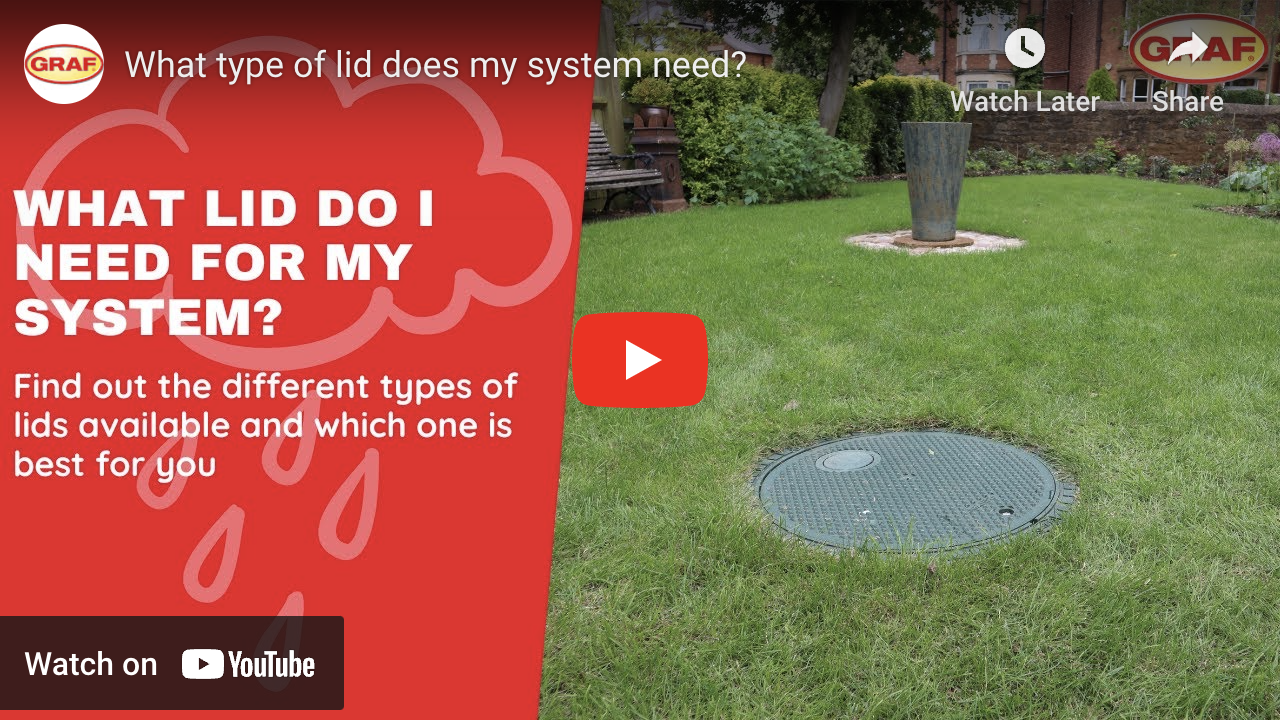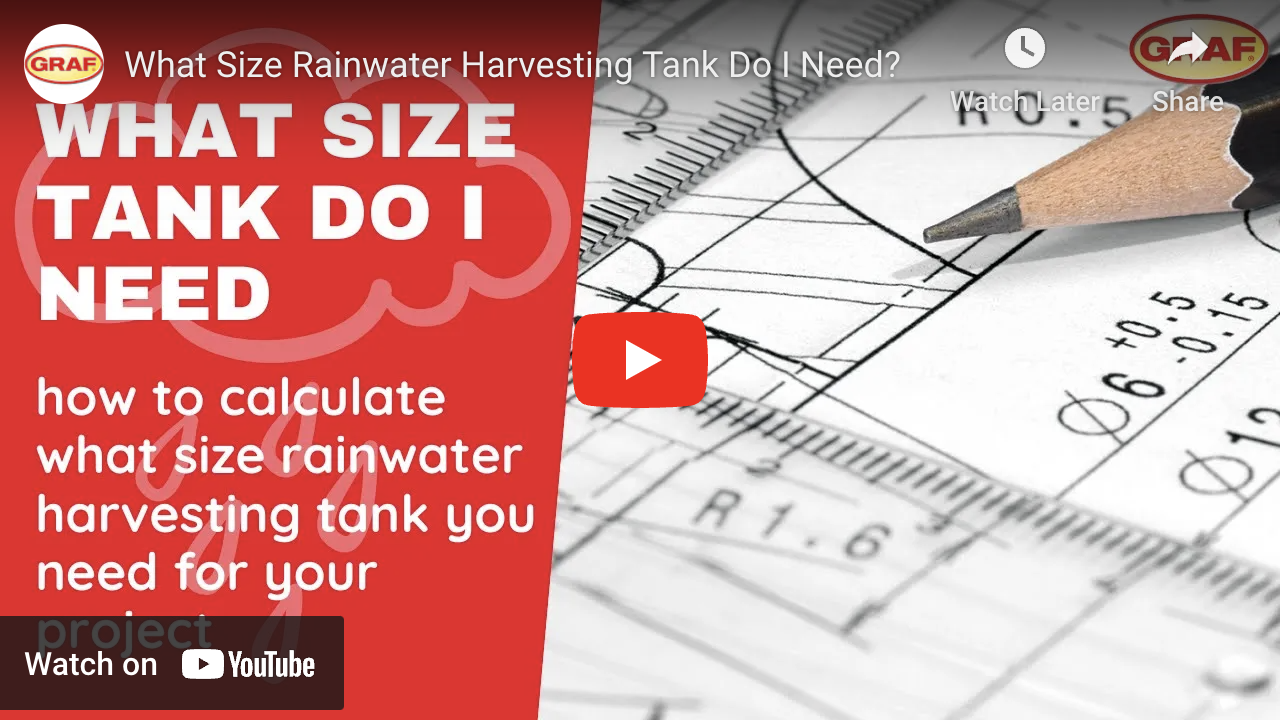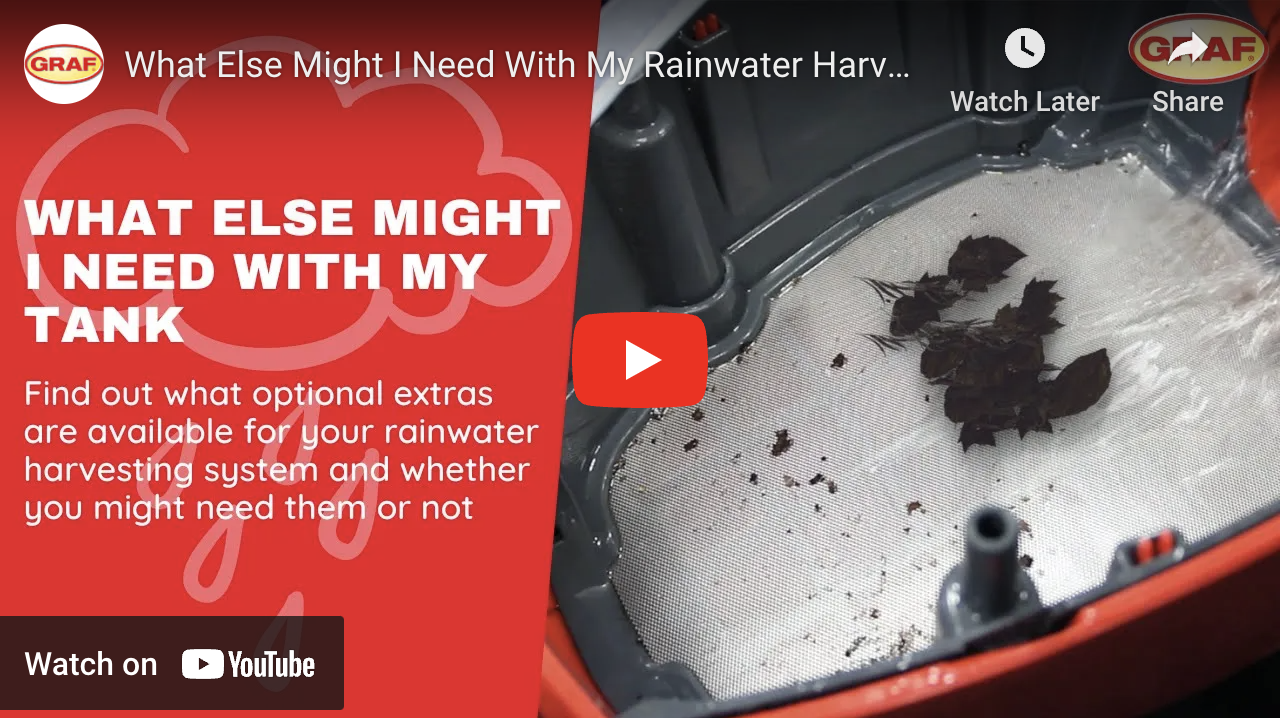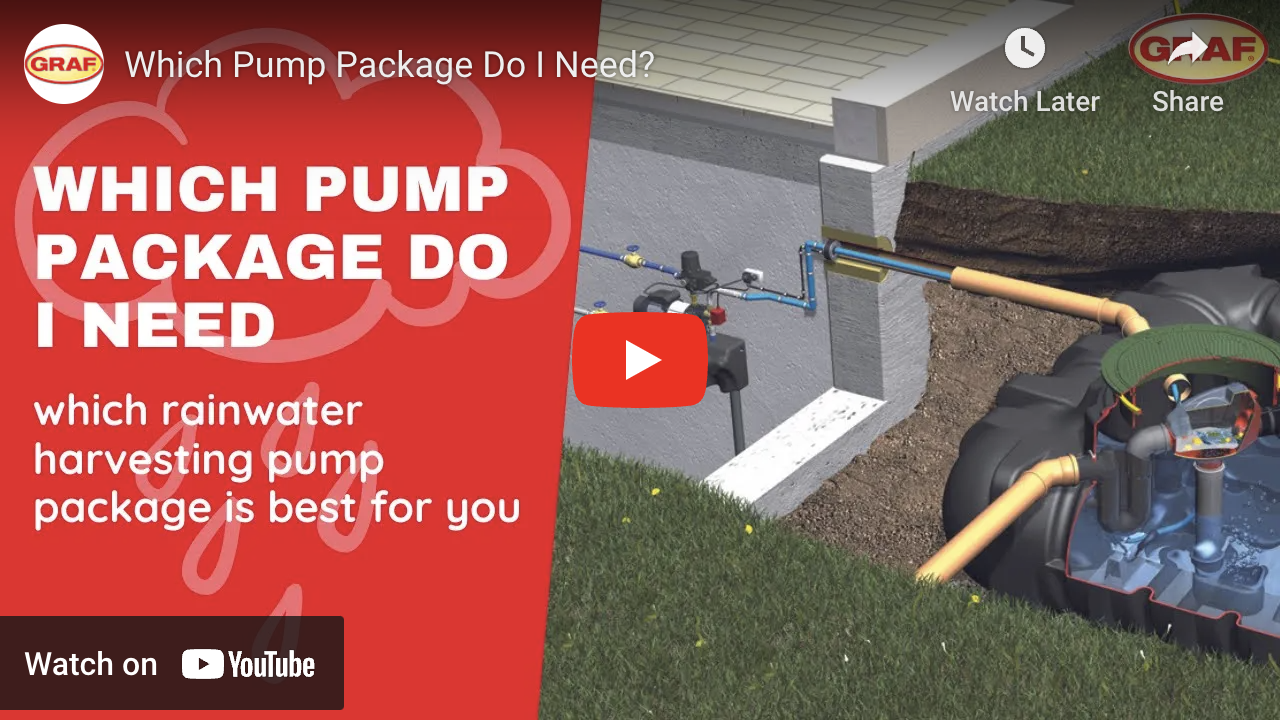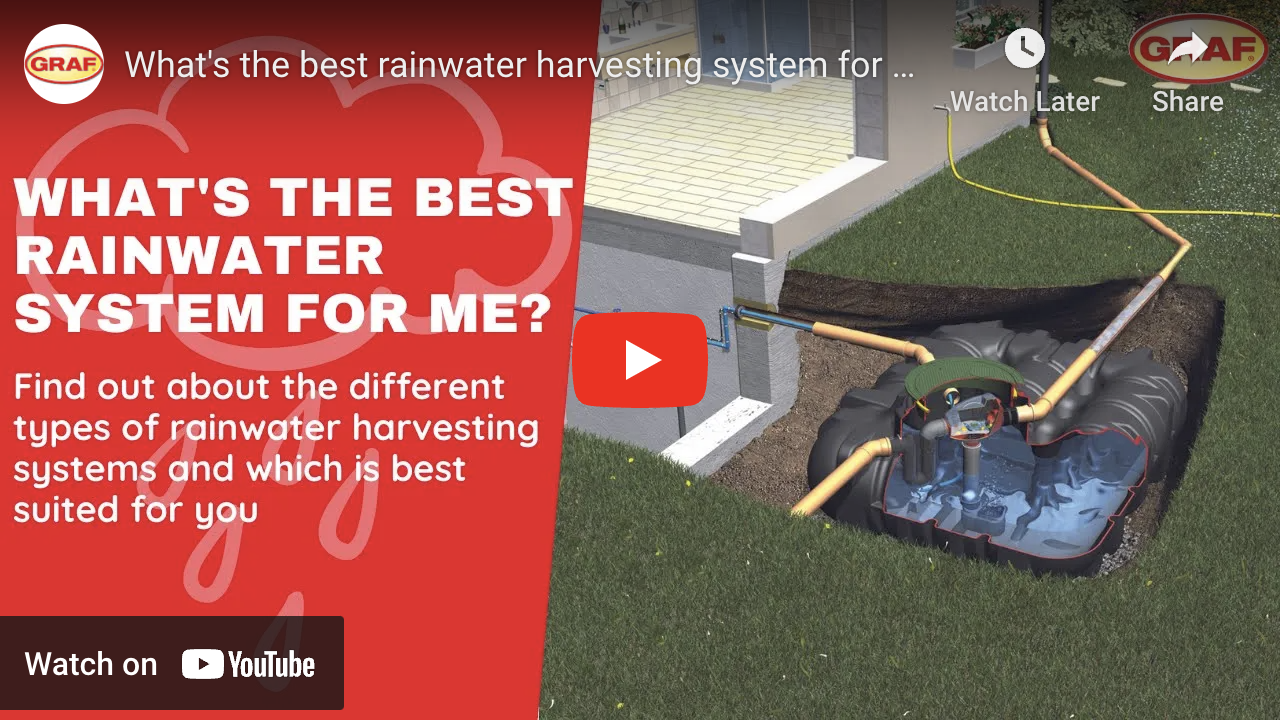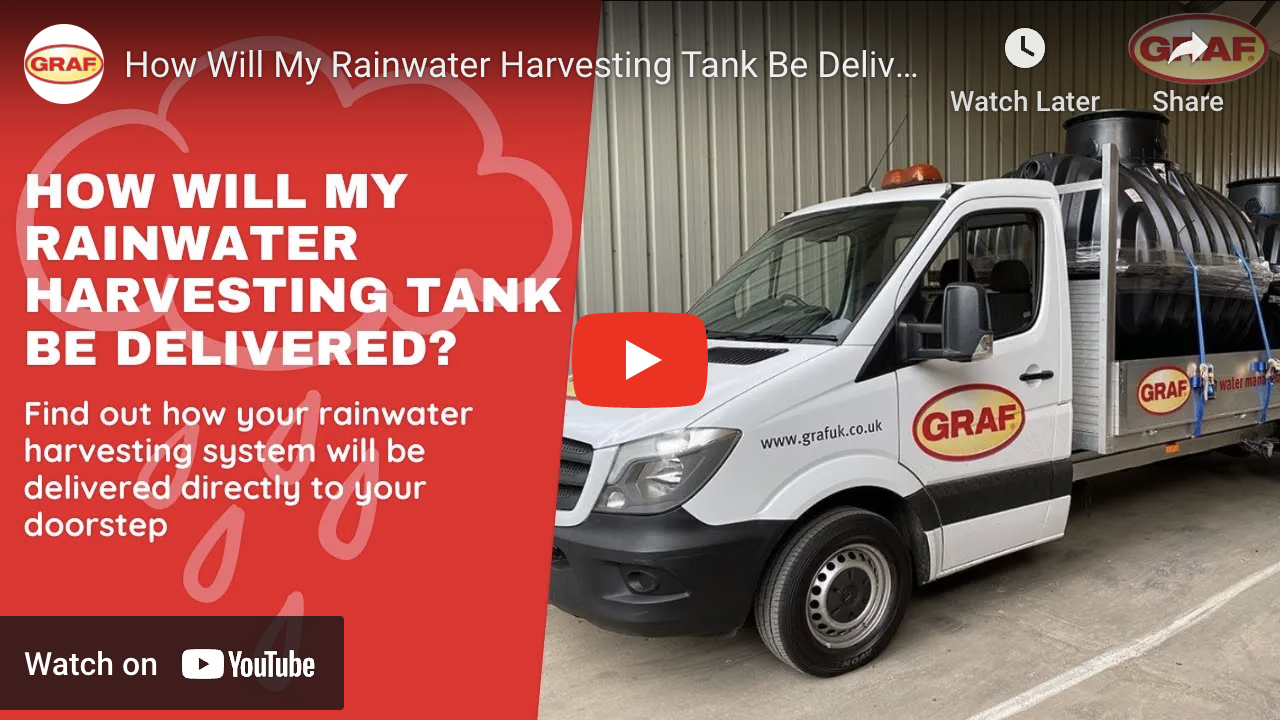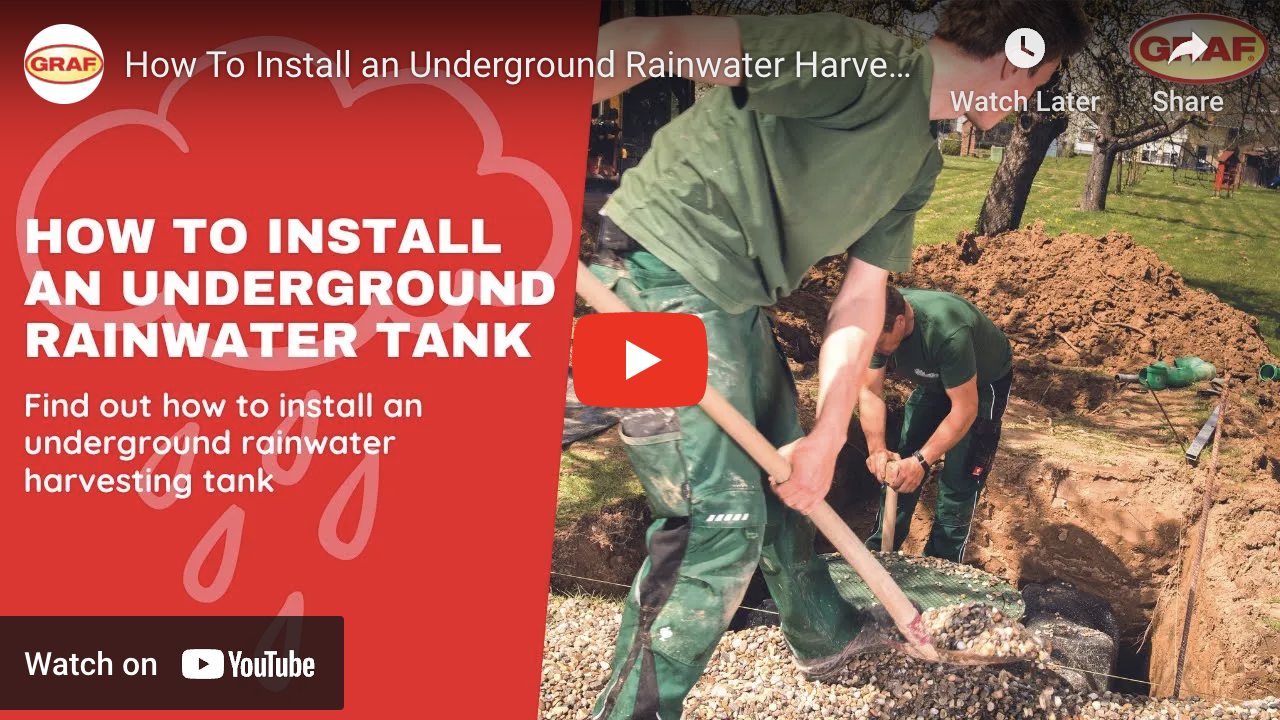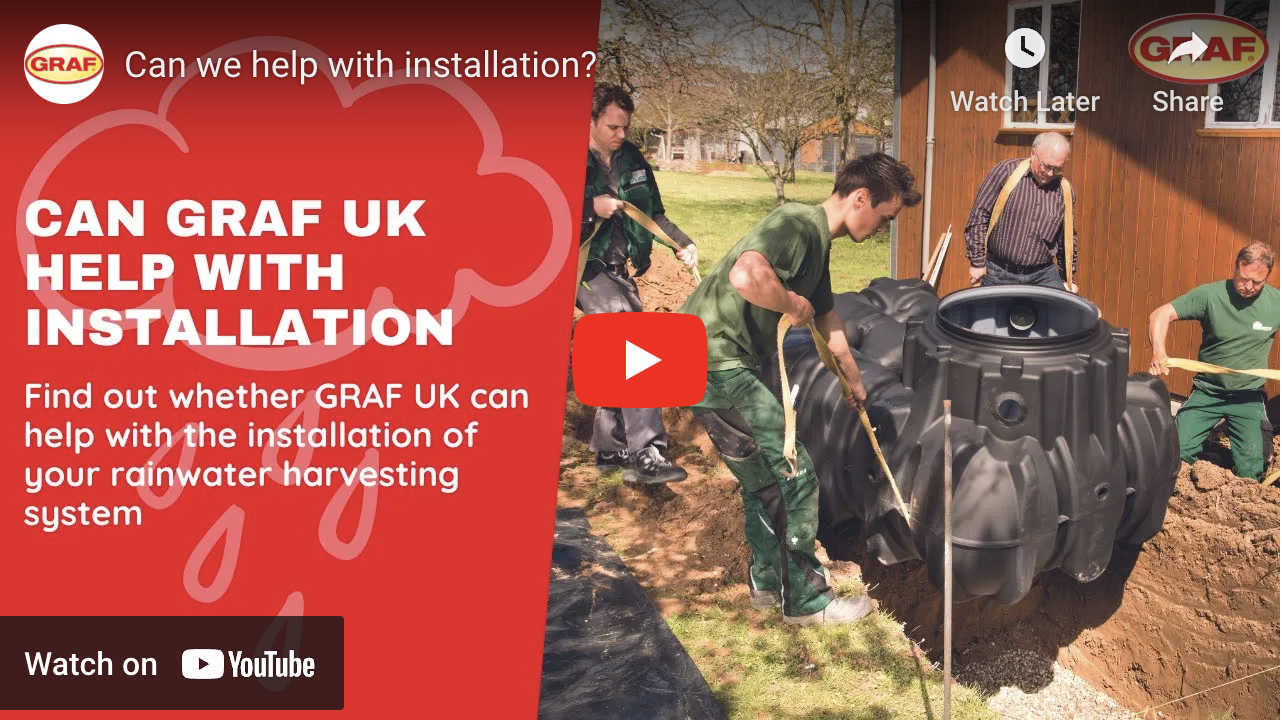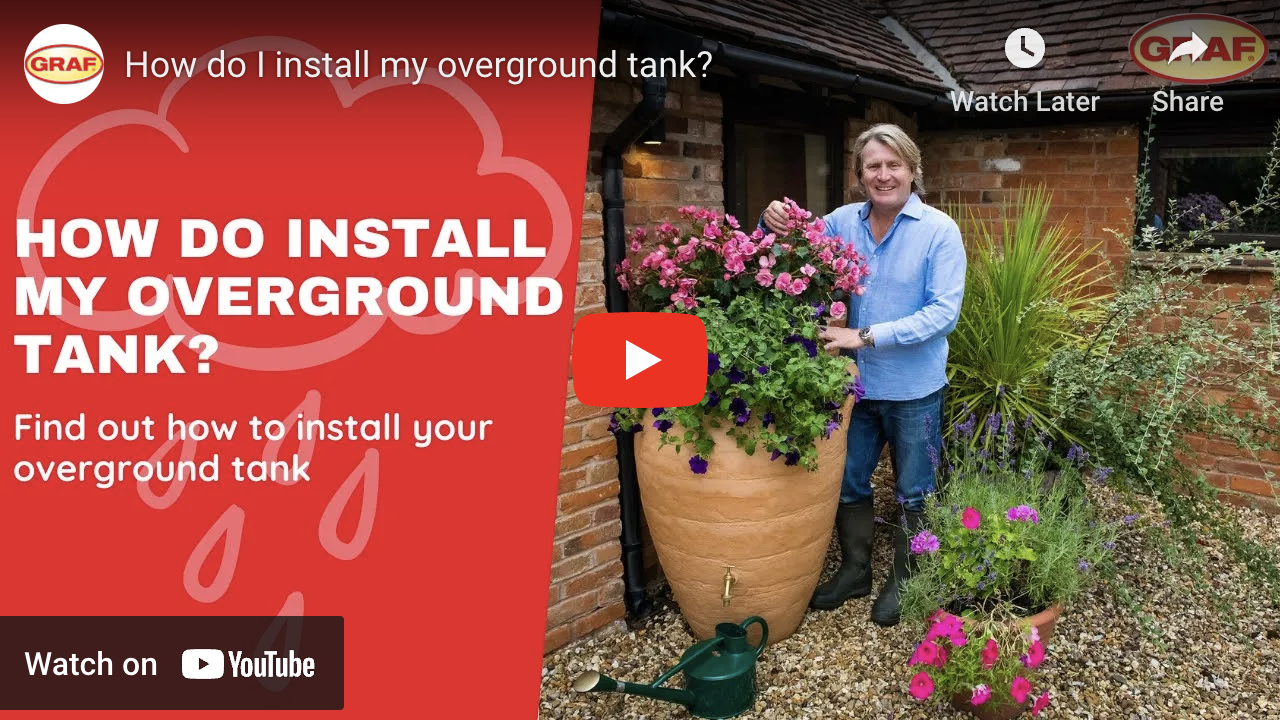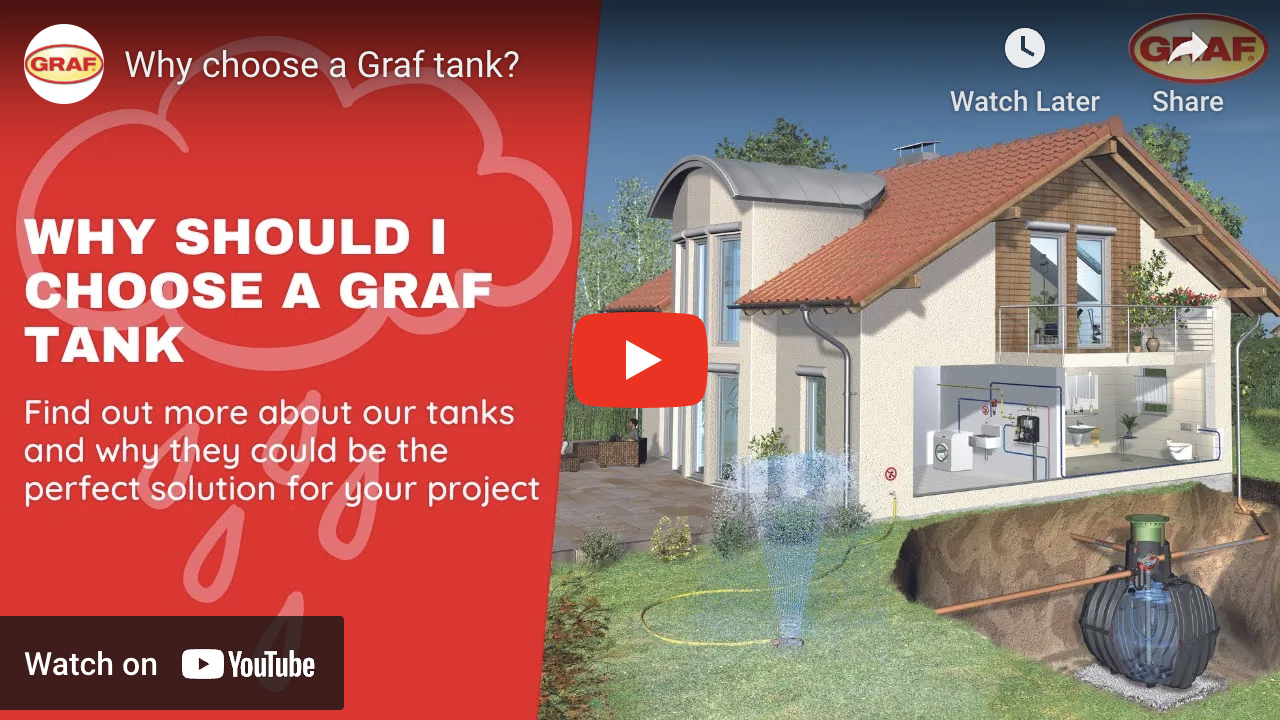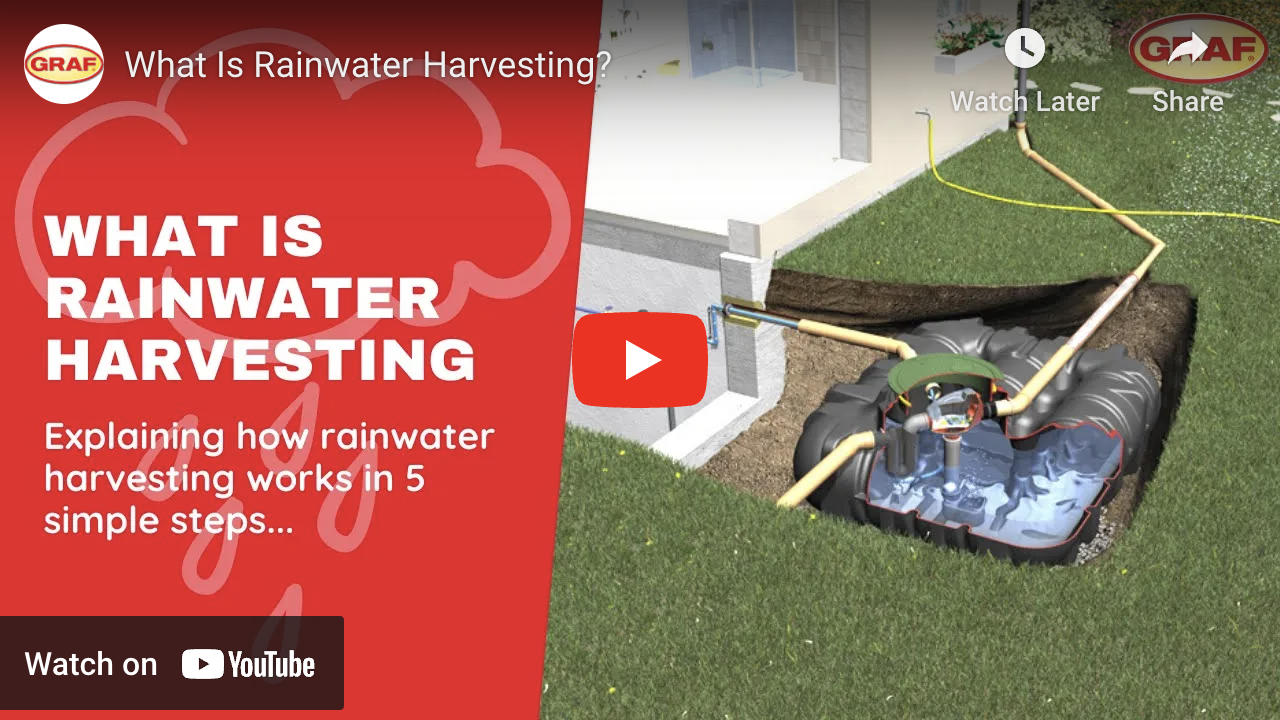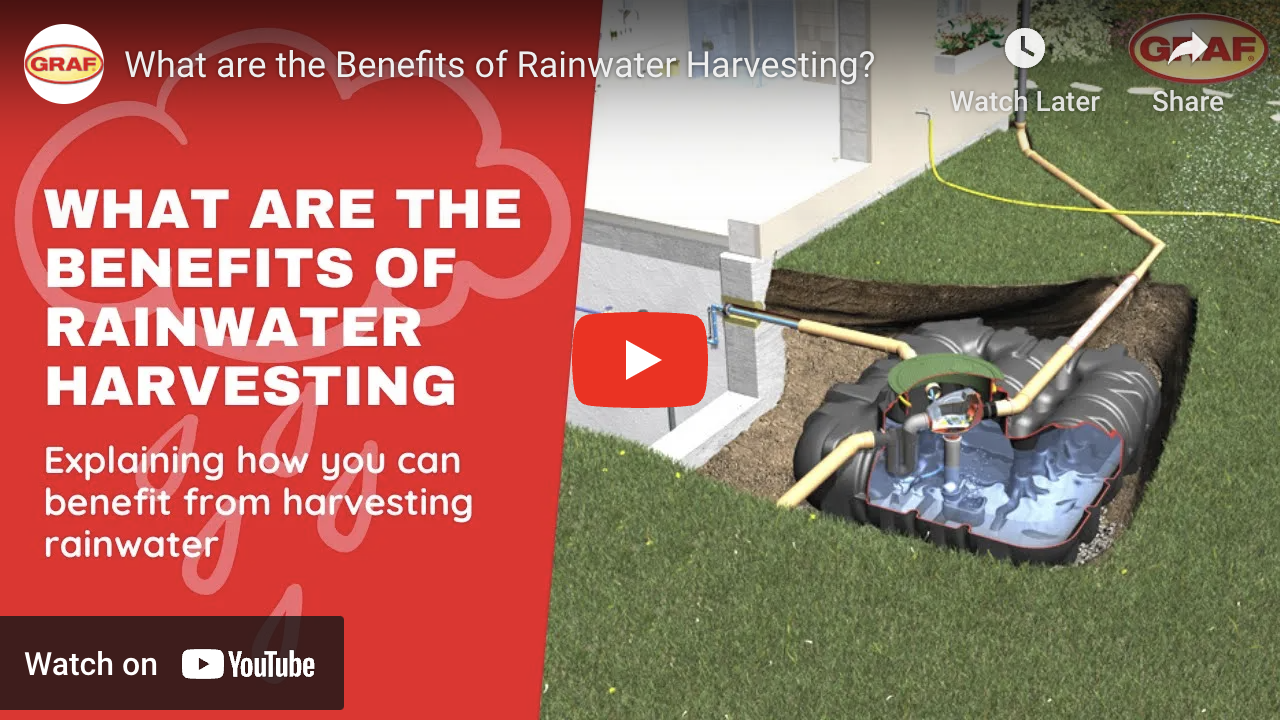Now that you’ve decided that you’d like to start collecting and using rainwater around your garden and home, you may be wondering, why Graf tanks? Graf UK Ltd is one of the fastest-growing suppliers of sustainable water management systems in the UK. We use 100% recycled materials in our tanks and solutions so you can make the switch to collecting rainwater sustainably.
Our History
Our company dates back to 1962, so you can be sure we have plenty of experience and knowledge to provide you with quality solutions. To begin with, Otto F.Graf sold plastic containers and drums for fruit and wine growing as well as for industrial applications.
Within a few years, it turned its attention to producing rainwater tanks and quickly achieved a leading position in this market. We have been consistently developing this area of our business ever since.
Now, with businesses in many parts of the world and customers in over 70 countries worldwide, GRAF remains focused on providing products that help to save and manage water. We’re proud to bring these products to the UK market and to encourage everyone to take their responsibility seriously when it comes to water management.
Our tanks and filter packages range in size to suit any type of building. From our 1500 litre Platin tank, right up to our 52,000-litre Carat XXL tank, we have a solution for all applications.
We also provide a number of options for pump packages to transfer the harvested rainwater back inside the property for re-use either for toilet flushing, for washing machines, for general cleaning water inside the property and also use outside via an external tap or irrigation system. Just like our wastewater treatment systems, our rainwater harvesting systems are available as off-the-shelf packages suitable for many types of homes and commercial buildings and we can also design bespoke systems to suit individual requirements.
Quality Is Our Focus
The Graf Tanks are manufactured to a very high standard. We use different types of moulding practices for the different types of tanks that we do. With the Carat tank, we use injection compression and with the larger Carat tanks, we use rotational moulding.
Within the rotational moulding, we generally have three layers of plastic to ensure we get a consistent tank wall thickness to ensure the integrity of the tank. Likewise with the Carat tank. By using the injection compression molding technique, we can ensure a very good, consistent thickness of the wall and its very little waste product during the manufacturing process.
Recycling and Sustainability
Sustainability is one of our key values. In a recent study by the national geographic, they reported that of the 8.3 billion metric tons of waste produced, 6.3 billion metric tons has become plastic waste but only 9% of this is recycled. We didn’t want to rely on our products getting recycled by other companies, so In 2009, Graf invested in its own raw material recycling process. All our tanks are made from 100% recycled plastic products.
What Can You Use Harvesting Rainwater For?
In The Garden: If you’re a keen gardener and you want to provide your flowers, plants and lawn with the best water which will keep them alive and looking beautiful for longer, then you’ll want to use rainwater. A garden only system can be purchased and installed for a much lower price than a full domestic rainwater harvesting system.
In The Home: If your budget is a little larger and you want to use harvested rainwater inside the property, for flushing WCs, supplying your washing machine and also your outside tap, then a full domestic system is what you need. The cost of which varies greatly depending on the size of the tank, the type of system chosen and whether you want technical and shiny or simple and cost-effective.
Which System Should I Choose?
Put simply, rainwater harvesting is collecting the rainwater that falls onto the roof of a building (either a home or a commercial building) and then capturing it inside a tank, which can be located either above or below ground. On its way into the tank, it passes through a filter – which varies in size depending on the surface area of the roof that the rainwater is being collected from – which keeps all leaves, moss and debris that may be travelling with the rainwater out of the tank. Once the rainwater is held within the tank, it is then extracted for use. If the rainwater tank is above ground, then the rainwater can simply be taken out of the tank via a tap for use in the garden when watering plants or your veg garden.
Graf systems provide flexibility in the installation process. We would normally recommend a granular backfill to ensure the integrity of the tank during the installation process. This is generally good on self-draining grounds. If you have come across poorer ground conditions with clay content, then you can also use a concrete backfill material.
Whichever system you decide, you will start to see the benefits quickly.


